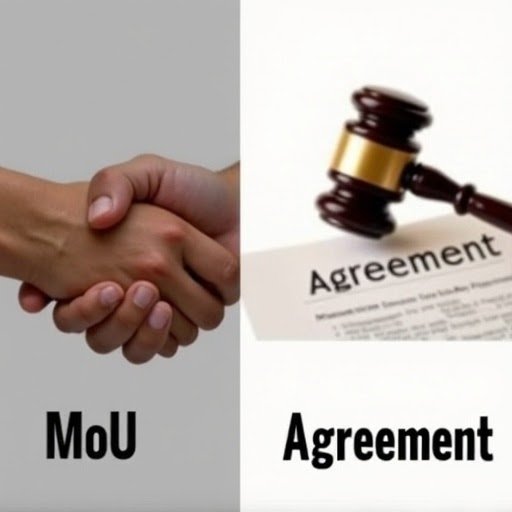[ad_1]
In the world of business, collaborations often start with optimism — two parties connecting, exchanging ideas, and putting a shared vision down on paper. This document is often called a Memorandum of Understanding (MoU).
On the other hand, when things are serious, parties sign an Agreement, a legally binding contract that sets every detail in stone.
At first glance, an MoU and an Agreement may look similar. Both outline objectives, roles, and expectations. But their legal weight is dramatically different — and misunderstanding this line can lead to costly legal surprises.
MoU – The Friendly Handshake in Writing
A Memorandum of Understanding is typically seen as non-binding.
It serves to:
-
Record mutual intentions
-
Define a broad framework for cooperation
-
Outline roles and expectations without locking parties into legal obligations
It’s the perfect choice during the exploratory phase of a project, partnership, or negotiation. It says, “We’re interested and here’s how we might work together, but we’re not committing — yet.”
Agreement – The Handshake Backed by Law
An Agreement is legally enforceable.
It:
-
Specifies exact rights and obligations of each party
-
Includes binding terms, timelines, and consequences for breach
-
Can be enforced in court if one party fails to comply
Agreements are used when both parties are ready to fully commit to deliverables and take on legal accountability.
Where Things Get Messy: The MoU That Became an Accidental Agreement
This is where many businesses trip up.
An MoU is generally non-binding, but if the language in the document includes commitments, obligations, timelines, and penalties, a court may interpret it as a binding contract — regardless of its title.
For example:
A company writes an MoU with a potential distributor, stating that the distributor “shall purchase 1,000 units every quarter” and “failure to meet these commitments will result in compensation.”
Even if it’s called an “MoU”, those words express clear contractual obligations — making it enforceable like an Agreement.
The Golden Rule
-
Use an MoU for exploring options, expressing intent, and setting out a vision — but keep the language flexible and free of binding obligations if you want it truly non-binding.
-
Use an Agreement when you’re ready to commit, define consequences, and hold each other legally accountable.
Key Takeaways
-
An MoU can unintentionally become binding if worded carelessly.
-
An Agreement can be legally weak if vaguely drafted.
-
Always have legal review of important documents — even “just an MoU.”
💡 Pro Tip: If you want your MoU to be non-binding, say it explicitly and avoid words like “shall,” “must,” “will provide,” or timelines with penalties. Instead, use soft language such as “intend to,” “may,” “propose to.”
[ad_2]
Source link


.png)